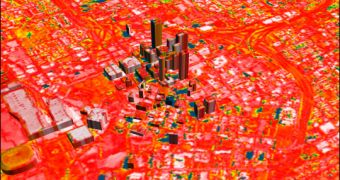Scientists are now able to talk about the impact an urban heat island (UHI) has upon the environment. For a significant period of time, researchers thought that human intervention, visible in overpopulated metropolitan areas plays a decisive part in global warming phenomenon.
Further more, the general opinion is that such urban regions are centers of heat.
Jacobson and Ten Hoeve are now well prepared to prove them wrong. The two scientist will published their findings in the Journal of Climate, but the data they obtained from their studies is already available online.
After they analyzed and anticipated UHI effects from 2005 to 2025, Jacobson and Hoeve are now certain that these areas' contribution to warming is rather insignificant.
“This study shows that the urban heat island effect is a relatively minor contributor to warming, contrary to what climate skeptics have claimed. Greenhouse gases and particulate black carbon cause far more warming,” declared Jacobson.
Despite the fact that the two researchers found that UHI doesn't have a major influence upon the environment, they seem to think that developing strategies necessary to reduce the consequences of urban heat are still needed to control the global temperature growth.
UHI's negative effects are strongly determined by waste of energy in these large urban areas. Also, scientists were able to prove that UHI are a consequence of the urban development.
Architect faced the challenge of designing innovative, modern buildings while using materials which proved to retain heat.
Not only scientists are now able to name the problem, they are also trying to improve the present situation by coming up with effective strategies of controlling the rise of temperatures.
At first, Jacobson and Hoeve found that painting the buildings' roofs in white would be a great solution to this issue.
It appears that white reflective roofs would play a significant part in cooling urban areas.
Despite these benefits, it seems that white roofs have the potential to reflect the light back in the atmosphere, where it is absorbed by pollutants such as black carbon, which all in all, creates heat.
Scientists seem to think that the best way to make sure that the issue of urban heat islands won't increase its popularity is to install photovoltaic panels on roofs.
Such panels are a great, eco-friendly way of replacing traditional sources of energy with green ones. Also, they are able to decrease the amount of sunlight swallowed by buildings, due to the fact that they convert it into renewable energy.
They seem to be the best option, since, unlike white roofs, they don't allow sunlight to come back in the atmosphere, so that it can be taken over by pollutants.

 14 DAY TRIAL //
14 DAY TRIAL //